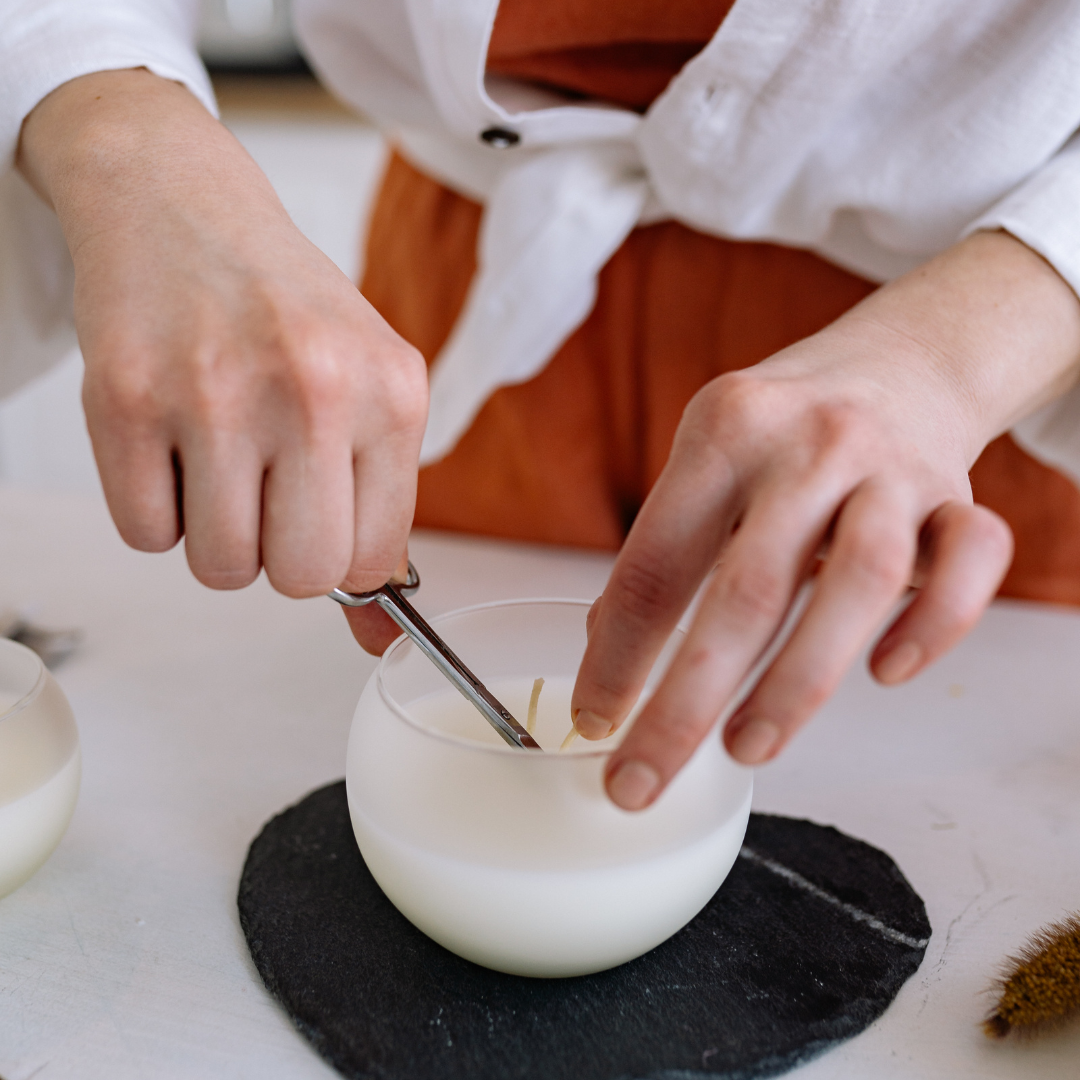
Candle Care
How to Properly Maintenance Your Candles
Ensuring proper candle care is crucial for maximizing the lifespan of each candle. Discover why tools like candle snuffers, scissors, and dippers play pivotal roles in this process.
The Basics of Candle Care

Trimming the Wick
For a clean, consistent burn, it's important to ensure your candle's wick is the right length, necessitating occasional trimming. Before lighting your candle, check the length of the wick. If it exceeds the recommended 0.25 inches, use a wick trimmer to trim it neatly. Precision is key here; a wick that's too short may drown in melted wax, failing to ignite.

Minimizing Mess when Extinguishing Your Candle: Snuffers & Dippers
Using a snuffer eliminates the issues associated with blowing hot wax and the unpleasant smoke and odor from a smoldering wick that occurs when you simply blow out a candle.
A wick dipper is employed to extinguish a candle by dipping the wick into the wax, which prevents smoking and the splattering of hot wax. This method offers several benefits: it reduces smoke and soot, prevents wick mushrooming, and ensures the wick is coated with wax for optimal burning in future uses. This not only prolongs the candle's lifespan but also promotes a cleaner burning process. To use a wick dipper, wait until a small pool of wax forms around the wick after melting. Carefully press the wick into this wax pool with the dipper until the flame is extinguished. Straighten the wick afterward to prepare it for the next lighting, ensuring it's coated in wax.

Additional Tips:
Ensure Even Burning:
When lighting a candle for the first time, allow it to burn until the entire surface melts. This prevents tunneling, where a rim of solid wax remains, inhibiting further melting. Achieving an even burn ensures all the wax in your candle is utilized.
Burn for 3 to 4 Hours at a Time:
Candles are designed to be burned for three to four hours at a stretch. Burning for shorter durations may result in tunneling or insufficient fragrance diffusion, while burning for too long can lead to overheating and thinning of the wax, potentially damaging fragrance oils and causing soot buildup.


